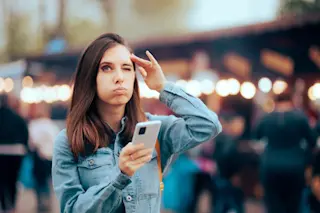You probably didn’t notice but the last time you talked with a colleague or chatted with a friend, you blinked. A lot. Blinks are a conversational cue akin to nodding one’s head, according to a new study published today in the journal PLOS One.
As such, the unconscious reflex changes how people talk to each other. Even the subtlest non-verbal clues impact our conversations, the finding suggests.
“Our findings indicate that even visually subtle behavior such as listener blinking is anything but irrelevant to face-to-face communication,” wrote Paul Hömke, a language and cognition scientist at the Max Planck Institute for Psycholinguistics in Nijmegen, in the Netherlands, who led the new research.
Open And Shut
Blinking is a reflex. The involuntary action blocks wayward debris from getting into our eyeballs and helps to keep them lubricated. Although infants hardly blink, adults do it far more often than necessary — about 13,500 ...














